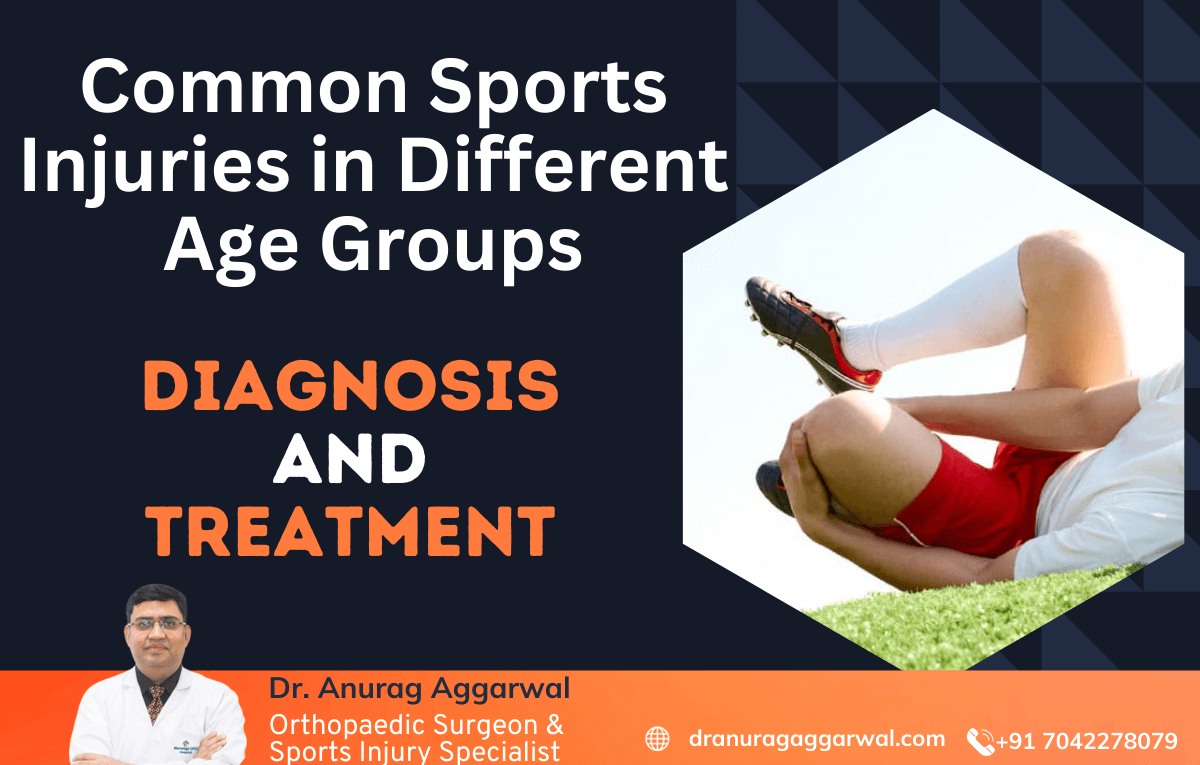Introduction
Are you searching to know about the common sports injuries in different age groups? Then you are at the right place. Sports injuries can occur at any age and often vary depending on factors such as activity level, skill level, and physical condition. Understanding the common types of injuries that affect different age groups is essential for athletes, coaches, and healthcare professionals to effectively diagnose and treat these conditions. In this blog post, we’ll explore some of the most prevalent sports injuries across various age groups, along with their diagnosis and treatment options.

1. Youth Athletes (Children and Adolescents)
Children and adolescents are prone to certain sports injuries due to their still-developing bodies and participation in high-impact activities. Common injuries in this age group include:
- Sprains and strains: Overstretching or tearing of ligaments (sprains) and muscles or tendons (strains) due to sudden movements or impacts.
- Growth plate injuries: Damage to the areas of growing tissue near the ends of the long bones, often caused by repetitive stress or trauma.
- Overuse injuries: Conditions like Osgood-Schlatter disease (knee pain) or Little League elbow (elbow pain) resulting from repetitive stress on growing bones and muscles.
Diagnosis typically involves a physical examination, imaging tests (X-rays, MRI), and assessing growth plate status. Treatment may include rest, ice, physical therapy, and activity modification.
2. Adult Athletes
Adults engage in a wide range of sports and physical activities, making them susceptible to various injuries depending on their chosen pursuits. Common injuries among adult athletes include:
- Ligament sprains: Injuries to the ACL (anterior cruciate ligament), MCL (medial collateral ligament), or other ligaments, often due to sudden stops, twists, or impacts.
- Muscle strains: Overstretching or tearing of muscles, commonly occurring in the hamstrings, quadriceps, or calf muscles.
- Tendonitis: Inflammation of tendons, such as Achilles tendonitis or tennis elbow, often caused by repetitive motions.
Diagnosis involves a physical exam, possibly supplemented by imaging tests. Treatment may include rest, physical therapy, bracing, or in severe cases, surgical intervention.
3. Older Adults
As individuals age, they may experience changes in musculoskeletal health and mobility, increasing their risk of certain sports injuries. Common injuries in older adults include:
- Joint degeneration: Conditions like osteoarthritis, characterized by the breakdown of cartilage in the joints, leading to pain and stiffness.
- Rotator cuff tears: Tears in the muscles and tendons surrounding the shoulder joint, often resulting from repetitive overhead motions or degenerative changes.
- Stress fractures: Tiny cracks in bones, commonly occurring in weight-bearing bones like the tibia or metatarsals, due to repetitive impact or overuse.
Diagnosis may involve imaging tests and a comprehensive evaluation of medical history and symptoms. Treatment options include rest, pain management, physical therapy, and in severe cases, surgery.
Conclusion
Understanding the common sports injuries prevalent in different age groups is crucial for effective prevention, diagnosis, and treatment. Whether you’re a youth athlete, an adult enthusiast, or an older individual staying active, prioritizing proper warm-up, technique, and injury prevention strategies can help reduce the risk of injuries and promote long-term musculoskeletal health. If you experience persistent pain or discomfort during physical activity, consult a healthcare professional for a thorough evaluation and personalized treatment plan. With proper care and attention, you can continue enjoying the benefits of sports and physical activity at any age.

